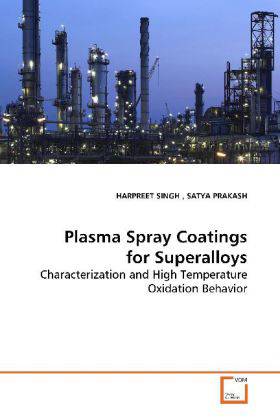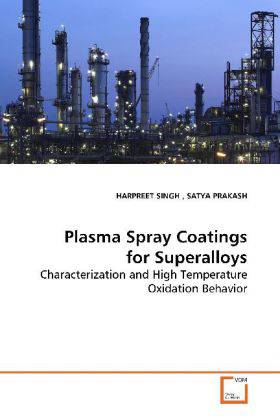
- Afhalen na 1 uur in een winkel met voorraad
- Gratis thuislevering in België vanaf € 30
- Ruim aanbod met 7 miljoen producten
- Afhalen na 1 uur in een winkel met voorraad
- Gratis thuislevering in België vanaf € 30
- Ruim aanbod met 7 miljoen producten
Zoeken
Plasma Spray Coatings for Superalloys
Characterization and High Temperature Oxidation Behavior
Harpreet Singh
Paperback | Engels
€ 77,95
+ 155 punten
Omschrijving
Superalloys are well known materials for
high temperature applications. Although the
superalloys have adequate mechanical strength at
elevated temperatures, yet they often lack resistance
to oxidizing/corroding environments during long time
exposures. One possible way to combat the problem
constitutes the use of protective coatings on the
superalloys. Among the various techniques used for
deposition of coatings, plasma spraying is a
versatile technology that has been successful as a
reliable cost-effective solution for many industrial
problems.In the present book, high temperature
oxidation behavior of some Ni- and Fe- based
superalloys has been explained with and without the
application of plasma sprayed coatings in air, as
well as, in a simulated boiler (Na2SO4-60%V2O5)
environment.Characterization and high temperature
oxidation behavior of four coatings; Ni-22Cr-10Al-1Y
(NiCrAlY), Ni-20Cr, Ni3Al and Stellite-6 has been
elaborated with the help of Optical microscopy,
Scanning Electron Microscopy/Energy Dispersive
Spectroscopy and Electron Probe Micro Analysis.The
effectiveness of the coatings has been discussed on
the basis of weight change data.
high temperature applications. Although the
superalloys have adequate mechanical strength at
elevated temperatures, yet they often lack resistance
to oxidizing/corroding environments during long time
exposures. One possible way to combat the problem
constitutes the use of protective coatings on the
superalloys. Among the various techniques used for
deposition of coatings, plasma spraying is a
versatile technology that has been successful as a
reliable cost-effective solution for many industrial
problems.In the present book, high temperature
oxidation behavior of some Ni- and Fe- based
superalloys has been explained with and without the
application of plasma sprayed coatings in air, as
well as, in a simulated boiler (Na2SO4-60%V2O5)
environment.Characterization and high temperature
oxidation behavior of four coatings; Ni-22Cr-10Al-1Y
(NiCrAlY), Ni-20Cr, Ni3Al and Stellite-6 has been
elaborated with the help of Optical microscopy,
Scanning Electron Microscopy/Energy Dispersive
Spectroscopy and Electron Probe Micro Analysis.The
effectiveness of the coatings has been discussed on
the basis of weight change data.
Specificaties
Betrokkenen
- Auteur(s):
- Uitgeverij:
Inhoud
- Aantal bladzijden:
- 308
- Taal:
- Engels
Eigenschappen
- Productcode (EAN):
- 9783639132540
- Uitvoering:
- Paperback
- Afmetingen:
- 150 mm x 18 mm
- Gewicht:
- 426 g

Alleen bij Standaard Boekhandel
+ 155 punten op je klantenkaart van Standaard Boekhandel
Beoordelingen
We publiceren alleen reviews die voldoen aan de voorwaarden voor reviews. Bekijk onze voorwaarden voor reviews.











